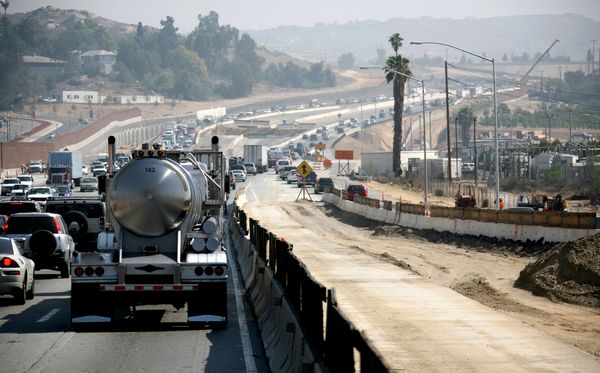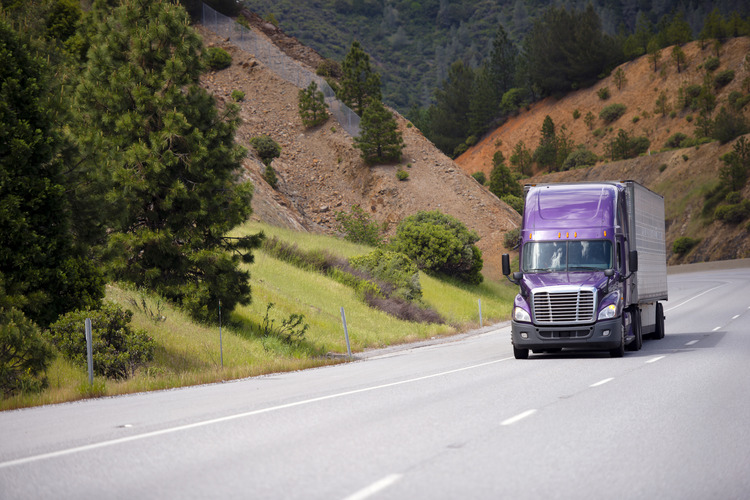The movement of goods by commercial trucks over California’s extensive network of freeways comes with a risk of accidents that cause significant damage. Understanding what freeway has the most truck accidents in California and the factors contributing to these crashes is crucial to lowering your risk of a collision. However, if you’ve been involved in a truck accident, a California truck accident lawyer from Ernst Law Group can help you navigate the legal process to recover compensation for your damages.
What are California’s riskiest freeways for truck accidents?
Several California freeways emerge as contenders for the most truck collisions, including:
Interstate 5 (I-5)
According to the California Office of Traffic Safety (OTS), many of the state’s distracted driving accidents resulting in fatalities occur on Interstate 5. Several factors cause truck accidents on the 5 freeway:
- High truck volume – I-5 experiences heavy traffic, particularly in sections connecting major cities, increasing the risk of 5 freeway truck accidents.
- Topography – Portions of I-5 traverse mountainous terrain, including the notorious Grapevine section near Tejon Pass. Steep grades and curves pose challenges for truck drivers.
- Urban congestion – In metropolitan areas like Los Angeles and San Diego, I-5 intersects with local traffic, leading to congestion and heightened accident risk.
- Freight corridor – As a central freight corridor, I-5 sees a constant stream of trucks transporting goods to and from California’s ports and distribution centers, which can increase the pressure to meet tight delivery schedules.
Interstate 10 (I-10)
Another California freeway with many accidents is Interstate 10. Several factors contribute to the prevalence of truck accidents on the 10 freeway:
- High traffic volume – I-10 experiences heavy traffic congestion, especially in urban areas, increasing the likelihood of accidents, particularly during peak travel times.
- Driver fatigue – The vast stretches of I-10 traversing California’s desert regions can be particularly challenging for tired drivers and increase the likelihood of truck accidents on I-10.
- Speeding – The wide-open stretches of this freeway can tempt drivers to exceed the speed limit or engage in aggressive driving behaviors, leading to dangerous situations and I-10 truck accidents.
Interstate 710 (I-710)
Interstate 710 presents the following unique challenges and dangers for truck drivers, making it a hotspot for truck accidents:
- Congestion – I-710 is a critical transportation route for goods movement, connecting the Ports of Los Angeles and Long Beach to distribution centers and interstate highways. As a result, it experiences heavy congestion, increasing the risk of 710 truck accidents.
- Narrow lanes – Portions of I-710 feature narrow lanes and limited shoulder space, leaving little room for error, especially for large trucks.
- Complex intersections – I-710 intersects with several major freeways and arterial roads, leading to complex interchange configurations. Negotiating these interchanges requires careful navigation to prevent truck accidents on the 710 freeway.
- Infrastructure limitations – The aging infrastructure of I-710 presents challenges for truck drivers, including deteriorated pavement, potholes, and inadequate signage, which can contribute to accidents.
Interstate 405 (I-405)
While the dangers on “The 405” affect all motorists, truck drivers face a particular risk of 405 semi-truck accidents due to these factors:
- Traffic volume – I-405 is one of the busiest freeways in the U.S., serving as a major commuter route and a crucial artery for commercial trucking. This high congestion can increase the risk of truck accidents on the 405 freeway.
- Complex interchanges – I-405 features numerous interchanges with other major freeways. The complex lane configurations create challenging driving conditions for truck drivers, increasing their risk of 405 truck accidents.
- Limited shoulder space – Portions of I-405 have narrow lanes and limited shoulder space, particularly in densely populated areas, making truck navigation difficult.
State Route 60 (SR-60)
SR-60, known as the Pomona Freeway, presents the following unique challenges for truck drivers:
- Steep grades – Portions of SR-60 traverse mountainous terrain and include steep grades, sharp curves, and elevation changes, which can be challenging for truck drivers hauling heavy loads and can lead to truck accidents on the 60 freeway.
- Driver fatigue – Truckers operating on SR-60 often face long-haul routes covering vast distances, leading to fatigue and an increased risk of semi-truck accidents on the 60 freeway.
State Route 138 (SR-138)
The CA 138 truck route presents these challenges and dangers for truckers:
- Terrain – SR-138 traverses varied terrain, including mountainous regions and desert landscapes with steep grades, sharp curves, and winding sections.
- Environmental hazards – Southern California experiences weather conditions, including high winds, dust storms, and occasional snowfall, creating hazardous driving conditions on SR-138.
What are the underlying causes of truck accidents on California freeways?
Common causes of truck accidents include:
- Driver error
- Trucker fatigue
- Vehicle maintenance issues
- Weather conditions
- Improper loading or cargo securement
- Blind spots and limited visibility
- Roadway conditions
- Inadequately trained drivers
- Limited maneuverability
If you’ve been injured in a truck accident on a California freeway caused by someone else’s negligence, you may be eligible to file a legal compensation claim.
Who can help if you’re injured in a truck accident on a California freeway?
If you’ve been hurt in a collision on a California freeway, our truck accident attorneys in California can investigate your claim, determine liability, and pursue financial recovery. Contact our personal injury team at Ernst Law Group at (805) 541-0300 to set up a free consultation to discuss how we can help you recover damages for your injuries.





